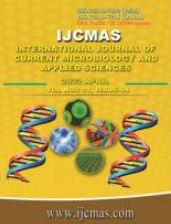


 National Academy of Agricultural Sciences (NAAS)
National Academy of Agricultural Sciences (NAAS)

|
PRINT ISSN : 2319-7692
Online ISSN : 2319-7706 Issues : 12 per year Publisher : Excellent Publishers Email : editorijcmas@gmail.com / submit@ijcmas.com Editor-in-chief: Dr.M.Prakash Index Copernicus ICV 2018: 95.39 NAAS RATING 2020: 5.38 |
A field experiment was conducted at Instructional-cum-Research Farm of Assam Agricultural University, Jorhat during 2016-17 and 2017-18. The experiment was laid out in split-plot design with three replications. The treatments consisted of two different establishment techniques of rice viz., Transplanted rice (M1) and Direct seeded rice (M2) in main plot and five different nutrient management practices viz., Control(N1), 100% RDF (N2), 50% RDN as inorganic + 50% RDN as vermi-compost + bio-fertilizer (N3), 75% RDN as inorganic + 25% RDN as vermi-compost + bio-fertilizer (N4) and 100% N as vermi-compost + bio-fertilizer (N5) in sub-plots. Result of the experiment revealed that in rice 50% RDN as inorganic + 50% RDN as vermi-compost + bio-fertilizer, in toria 75% RDN as inorganic + 25% RDN as vermi-compost + bio-fertilizer and in greengram 50% RDN as inorganic + 50% RDN as vermi-compost + bio-fertilizer recorded the highest value of available N, P2O5, K2 O and organic carbon content of the soil. Significantly, the highest SMBC, fungal and bacterial population after two years cropping cycle was found in 50% RDN as inorganic + 50% RDN as vermi-compost + bio-fertilizer.
 |
 |
 |
 |
 |